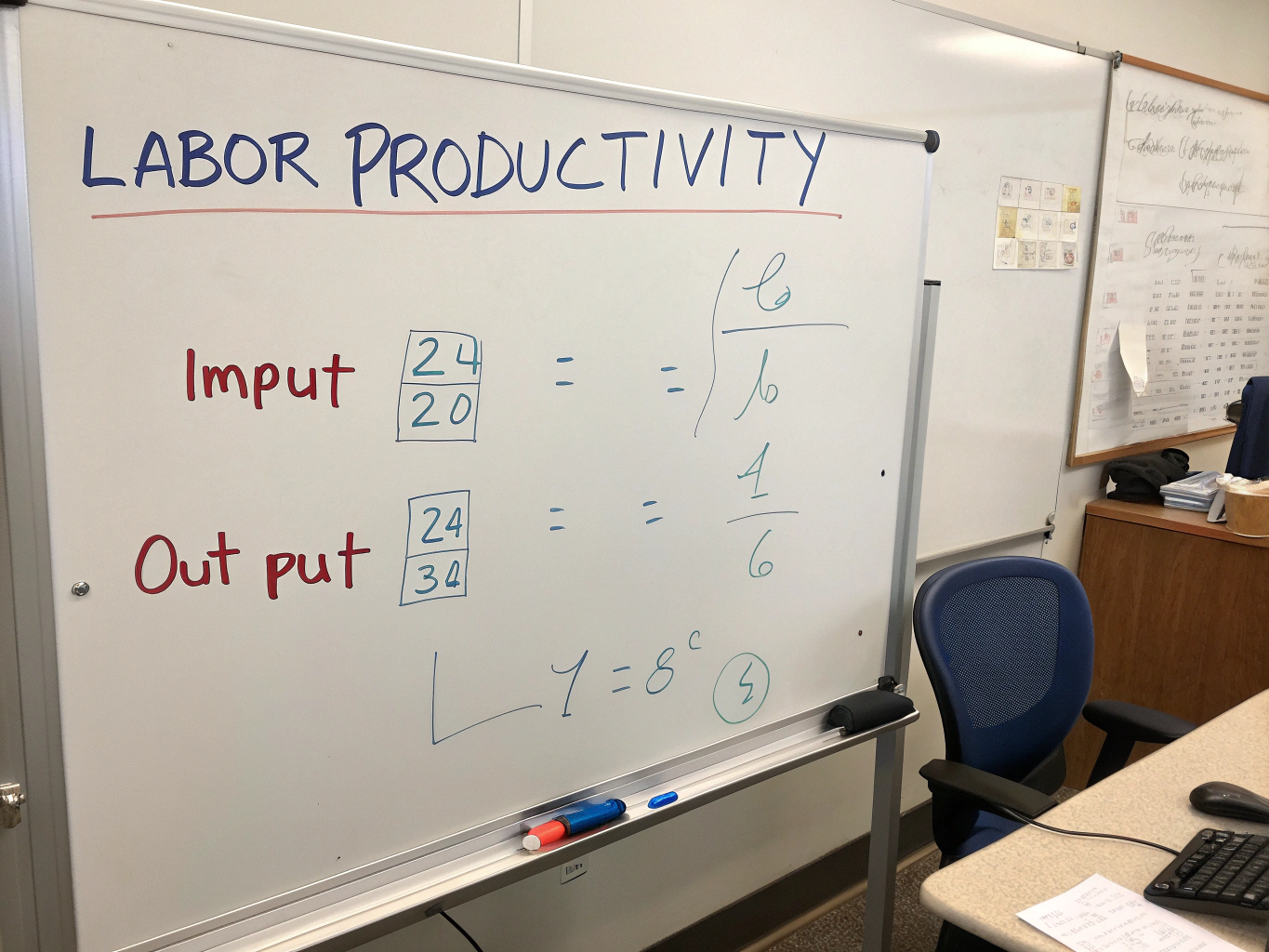How to Calculate Labour Productivity and Boost Efficiency Fast
Are you trying to figure out how to calculate labour productivity in your workplace? You’re not alone. Many businesses struggle with this concept, but mastering it can lead to incredible improvements in employee efficiency and overall performance. Let’s break it down in practical steps.
Understanding Labour Productivity
Labour productivity refers to the amount of output produced per unit of labour input. Essentially, it’s how effectively your employees are producing goods or services. Calculating it can help you pinpoint opportunities for improvement, optimize workflows, and boost workplace productivity come 2025.
The Labour Productivity Formula
The basic labour productivity formula is simple:
Output / Labour Input = Labour Productivity
Where:
- Output: Total goods or services produced (in units).
- Labour Input: Total hours worked by employees.
This fundamental labour productivity calculation allows businesses to measure the efficiency of their workforce.
Steps to Calculate
- Determine Output: Count the total number of goods or services produced over a specific period (daily, weekly, annually).
- Calculate Labour Input: Record the total hours worked by all employees during that same period.
- Apply the Formula: Divide the total output by the total hours worked.
For instance, if a factory produces 500 widgets in a week with employees clocking 200 hours, the productivity would be:
500 widgets / 200 hours = 2.5 widgets per hour
This figure reveals insights into how effectively the workforce is performing.
Measuring Workforce Output
To truly increase labour efficiency, you need to monitor workforce output continuously.
Here are a few methods:
- Regular Reporting: Weekly or monthly productivity reports can highlight trends.
- Time Tracking Tools: Utilize software to accurately track hours worked versus output produced.
- Set Benchmarks: Establish productivity standards for different tasks.
Tips to Improve Employee Efficiency
Now that you know how to calculate labour productivity, let’s look at a few strategies to improve it:
- Training Programs: Equip employees with skills and knowledge.
- Incentives: Offer rewards for meeting productivity goals.
- Streamline Processes: Regularly review procedures for inefficiencies.
- Embrace Technology: Implement tools designed to enhance productivity.
Boosting Workplace Productivity by 2025
The future of productivity lies in the effective integration of technology and workforce training. By focusing on how to improve employee efficiency now, you’re setting up a framework that ensures your business thrives in the future.
Every step you take now can significantly impact your company’s growth and success. Why not consider resources like the
AI for Productivity eBook + Checklist: Supercharge Your Efficiency in 2245? This bundle can guide you with actionable insights to facilitate growth.
Additional Resources
If you’re looking for even more support to maximize productivity, check out the
ADHD Productivity Power Pack: Ebooks, Guides, Checklists, Workbook & Tools to Master Focus, Time Management & Organization. This resource offers a comprehensive approach to mastering efficiency in various environments.
Conclusion
Calculating and improving labour productivity is crucial to fostering a thriving workplace. Understand how to calculate labour productivity, apply the labour productivity formula, and consistently monitor your workforce output to discover new opportunities for enhancement.
Don't forget, in the pursuit of efficiency, leveraging resources like the AI for Productivity eBook + Checklist can make all the difference!
Remember: Keeping productivity high isn’t just a math problem; it’s a cornerstone of your success. Be proactive, evaluate, and evolve. Keep it real, keep it fresh, keep it engaging!
FAQs
1. What is the primary purpose of calculating labour productivity?
Calculating labour productivity helps businesses assess the efficiency of their workforce and identify areas for improvement.
2. How often should I measure labour productivity?
Regular measurement, such as weekly or monthly, is recommended to identify trends and make timely adjustments.
3. Can technology help with labour productivity?
Absolutely! Implementing productivity tools can streamline processes, enhance tracking, and improve overall efficiency.
4. Is employee training beneficial for productivity?
Yes, training empowers employees with skills and knowledge, leading to increased productivity and efficiency.
5. How can I incentivize my workforce for better productivity?
Consider performance bonuses, recognition programs, or additional responsibilities to motivate employees to excel in their roles.
For a more visual experience on ways to enhance labour productivity, check out this image:

By understanding how to calculate labour productivity and implement these strategies, you’re well on your way to creating a more efficient, effective workplace.

